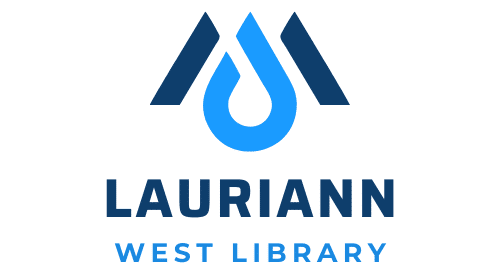Choosing the right aftermarket sunroof for your Chevrolet Tahoe can make a big difference in your driving experience. It allows you to add fresh air and natural light into your vehicle, enhancing your comfort and visibility. However, given the abundance of options available, making the right choice can be a tad complicated. It would help if you considered various components such as the door system, electrical hardware, brake control, and panel.
Understanding the Key Components of an Aftermarket Sunroof
When contemplating the right aftermarket sunroof, you must understand its key components. These include the glass panel, motor, and hardware, all of which play significant roles in the sunroof’s performance.
Have you seen this : What Are the Best Aftermarket Suspension Kits for a Smooth Ride in a Cadillac Escalade?
The glass panel is the central element, providing a view of the sky and permitting light into the vehicle. It must be properly engineered for durability and resistance to potential collision. The panel’s design should also mesh seamlessly with the Tahoe’s aesthetic.
Next, the motor enables the sunroof to open and close. Quality motors are tested to meet rigorous standards, ensuring long-term functionality. Additionally, the motor should be designed with a proper axle system to handle the sunroof’s weight and operations smoothly.
Additional reading : What’s the Best Method for Enhancing the Traction of a Drift Car with Staggered Wheel Setup?
Lastly, the hardware includes the electrical system and the door system. These need to be designed for easy control of the sunroof, either manually or electronically. The hardware should be crafted from robust materials to ensure longevity and engineered for easy installation.
Evaluating the Proper System for Your Needs
The system you choose for your Chevrolet Tahoe aftermarket sunroof will largely depend on your personal needs and preferences. The key factors to consider here are manual versus motorized systems, and pop-up versus built-in designs.
Manual systems are typically more affordable, since they don’t require electrical components. However, they may not offer the same level of convenience as a motorized system, which can be opened or closed with a simple push of a button.
Pop-up sunroofs are smaller and can be tilted to allow ventilation. They use a hinge system and can be a cost-effective option. On the other hand, built-in sunroofs slide between the car’s roof and headliner, providing a larger opening but at a higher cost.
Considering the Brake Control and Collision Standards
A vital factor often overlooked in choosing an aftermarket sunroof is the brake control and collision standards. These standards are crucial in maintaining the safety and integrity of your vehicle.
When the sunroof is opened, it can significantly affect the aerodynamics of your car. An efficient brake control system is necessary to ensure the Tahoe still handles well at high speeds and during sharp turns.
Collision standards are another critical aspect. The sunroof should be able to withstand impact in case of an accident. It is essential to choose a sunroof that has been rigorously tested and complies with all safety regulations.
Deciphering the MSRP
The Manufacturer’s Suggested Retail Price (MSRP) is another essential element to consider. It is a guide that helps you budget and plan your expenditure. However, the MSRP can sometimes be misleading, as it doesn’t always include installation costs.
It’s crucial to determine if the listed MSRP includes the cost of professional installation. If not, you will need to factor this into your budget. Additionally, remember that while a lower MSRP might seem attractive, it may also indicate lower quality components.
Factoring in the After-Sales Support
Lastly, consider the after-sales support offered by the manufacturer. This support can come in many forms, such as warranties, maintenance services, and customer support.
A generous warranty assures you that the manufacturer stands behind their product. It protects you from potential defects and malfunctions that may arise after installation.
Access to maintenance services is also crucial. Even the best-engineered sunroofs may require occasional servicing to keep them in top shape. Having a reliable service provider can save you from future headaches.
And finally, consider the manufacturer’s customer support. Should you encounter any issues or have any queries, a responsive and knowledgeable support team can help ensure your peace of mind.
Choosing the perfect aftermarket sunroof for your Chevrolet Tahoe doesn’t have to be challenging. As long as you understand its key components, evaluate the correct system for your needs, take into account brake control and collision standards, decipher the MSRP, and factor in after-sales support, you can make an informed decision and enhance your driving experience.
Importance of Genuine Designed Parts and Safe Repair
The quality of the parts used in your aftermarket sunroof is paramount. Genuine designed parts are typically more reliable and durable. They are often engineered and tested to rigorous standards, making them a safer choice for motorists. As a rule of thumb, always opt for aftermarket sunroofs that utilize genuine designed parts.
Genuine designed parts are parts that are specifically designed for a certain make and model of a car, in this case, the Chevrolet Tahoe. These parts are backed by General Motors, ensuring that they meet the necessary specifications for fit, form, and function.
Safe repair is another critical consideration when choosing an aftermarket sunroof. The installation of the sunroof must promote proper functionality and safety. The team handling the installation should be skilled and experienced, capable of delivering a proper safe repair. This is crucial, as a substandard installation can lead to issues with the sunroof’s performance down the line and could even compromise the vehicle’s safety.
Aesthetic Considerations: Exterior and Interior Trim
When choosing an aftermarket sunroof, considering the aesthetic impact on your Chevrolet Tahoe is essential. The sunroof should seamlessly integrate with the existing exterior trim and interior trim of your vehicle.
The exterior trim of your Tahoe plays a big role in its overall appearance. A well-fitted sunroof should blend seamlessly with the existing lines of the vehicle, enhancing its look rather than detracting from it. Consider the shape, size, and style of the sunroof and how these elements will align with your Tahoe’s design.
Similarly, the interior trim is a crucial aspect to consider. The sunroof’s design and operation should not interfere with the Tahoe’s interior elements such as the headliner, front door, and rear door. A well-designed sunroof will add to the interior aesthetics of your car, enhancing the overall driving experience without compromising on functionality.
Conclusion
Choosing the right aftermarket sunroof for your Chevrolet Tahoe is a process that requires careful thought and consideration. It’s not just about the look and feel, but also about the safety, durability, and functionality of the sunroof. By understanding the key components, evaluating the correct system for your needs, considering brake control and collision standards, deciphering the MSRP, factoring in after-sales support, emphasizing the use of genuine designed parts for safe repair, and considering the impact on the exterior and interior trim, you can make an informed decision. This will ensure that you choose a sunroof that not only enhances your driving experience but also adds value to your vehicle, making every drive in your Chevrolet Tahoe a pleasure.











